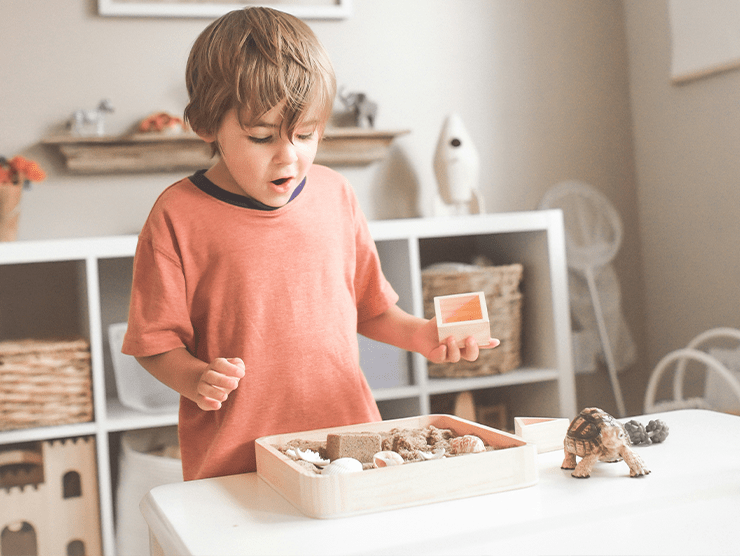When we hear “STEM”, we might think of complex science experiments, working with high-tech materials, or writing code for a website. But STEM (an acronym for science, technology, engineering, and math) learning starts with natural curiosity. Toddlers are driven to discover their world and ask lots of questions, which are the foundational skills of STEM learning.
Intentionally introducing STEM concepts at this stage through play and everyday activities can support the development of STEM skills, such as curiosity and critical thinking. No need to worry about having fancy tools or lab materials at home. Chances are, you already have everything you need to get started.
Tips for introducing STEM to toddlers
- Start with play. Use safe materials you can easily find at home. Blocks, cups, boxes, and items you find in nature make the perfect STEM exploration materials. Provide opportunities for free play with these items and observe what your child is curious about and notice what grabs their interest.
- Ask open-ended questions. Promote language and social-emotional development by asking questions, such as “What do you notice?” “How does that work?” These types of open-ended questions encourage your child to make their own observations and engage in deeper thinking and learning.
- Keep it fun. Make STEM a playful part of your everyday life. When you’re out for a walk, point out different shapes in nature. Ask your toddler to count with you the number of steps to your front door. Challenge your toddler to make a sturdy block tower.
- Focus on the process. To build confidence and instill a love of learning and STEM, encourage discovery and learning through trial and error, not just getting the “right" answer.
5 easy STEM activities for toddlers
Not sure where to start? Start with what your child likes to do and build on what they already know. Try these simple, play-based STEM activities to spark curiosity and problem-solving.
- Cook together. Let your toddler help measure, mix and pour ingredients, or help them practice cutting with a plastic knife. Counting ingredients, comparing sizes of measuring cups, and making predictions about what to do next are all basic math and science skills.
- Build a tower. Use blocks, cups, or boxes to build a tower and see how tall you can make it before it topples over. Count the blocks as your child stacks them and ask what new ideas they have for making a wider or taller tower.
- Sink or float. Drop different objects in a sink or bathtub full of water (rock, apple, plastic cup) and ask your child to make a prediction: “Do you think it will sink or float?”
- Sorting games: Challenge your toddler to group toys, leaves, blocks, or snacks by color, shape, or size. Count how many are in each group. Which group is bigger or smaller?
- Ramp races. Build ramps with cardboard or books. Roll cars or balls and see which goes faster, slower, and farther.
Toddlers don’t need structured lessons or fancy materials to explore STEM. Everyday play is full of science, technology, engineering, and math. The key is to nurture their curiosity, ask open-ended questions, and celebrate the process of discovery.





